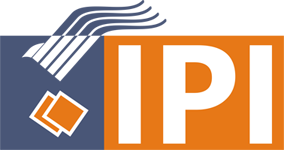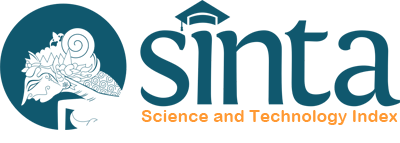Researches on LINE Today as News Aggregator
Abstract
Keywords
Full Text:
PDFReferences
Coddington, M. (2020). Gathering evidence of evidence: News aggregation as an epistemological practice. Journalism, 21(3), 365–380. https://doi.org/10.1177/1464884918817608
Doyle, G. (2015). Multi-platform media and the miracle of the loaves and fishes. Journal of Media Business Studies, 12(1–2), 49–65. https://doi.org/10.1080/16522354.2015.1027113
Edo, C., Yunquera, J., & Bastos, H. (2019). Content syndication in news aggregators . Towards devaluation of professional journalistic criteria. Comunicar, 27(59), 29–37. https://doi.org/https://doi.org/10.3916/C59-2019-03
Erawaty, D.P., & Irwansyah. (2019). Indonesia Journalistic Code of Ethics (News Aggregation Study). Jurnal Pekommas, 4(2), 197-206. DOI:10.30818/jpkm.2019.2040210
Ginting, A.D., Zaini, R. A.U., Agustina, A., &Septiani, S. (2019). News aggregator dan nilai-nilai jurnalisme: studi penyajian berita pada beritagar.id. CoverAge: Journal of Strategic Communication, (10)1, pp 27-36.
Kivunja, C., & Kuyini, A. B. (2017). Understanding and Applying Research Paradigms in Educational Contexts. International Journal of Higher Education, 6(5), 26. https://doi.org/10.5430/ijhe.v6n5p26
Kominfo. (2020). Dirjen PPI: Survei Penetrasi Pengguna Internet di Indonesia Bagian Penting dari Transformasi Digital. Retrieved December 18, 2020, from The results of a survey by the Indonesian Internet Service Providers Association (APJII) for the 2019-quarter II / 2020 period noted that the number of internet users in Indonesia reached 196.7 million. This number increased by 23.5 million or 8.9%25 comp
Lee, A. M., & Chyi, H. I. (2015). The Rise of Online News Aggregators: Consumption and Competition. The International Journal on Media Management, 17(1), 3–24. https://doi.org/https://www.researchgate.net/deref/http%3A%2F%2Fdx.doi.org%2F10.1080%2F14241277.2014.997383
Lune, H., & Berg, B. L. (Bruce L. (2017). Qualitative research methods for the social sciences (Ninth Edition) Global Edition.
Luthfi, A. (2019, November 22). LINE Today Jadi Agregator Berita Terpopuler di Android. Medcom.id. Retrieved from https://www.medcom.id/teknologi/news-teknologi/yKXGp20k-line-today-jadi-agregator-berita-terpopuler-di-android
Maulana, I.F. (2021). Line today dan kualitas jurnalisme indonesia: Studi empirik dan meta-analisis kualitatif pada agregator berita digital. Academic Journal of Da’wa and Communication, 2(1), pp 1-28. DOI : 10.22515/ajdc.v1i1.3311
Maulana, I.F, & Irwansyah. (2020). Potensi pengembangan agregator berita dengan konsep slow technology berbasis human centered. Kajian Jurnalisme, 4(2), pp 90-105. DOI: 10.24198/jkj.v4i1.27606
Martin, N. (2014). Information Verification in the Age of Digital Journalism. 2014 Special Libraries Association Annual, (June 2014). Retrieved from https://www.researchgate.net/publication/284714775_Information_Verification_in_the_Age_of_Digital_Journalism
Miles, M. B., & Huberman, A. M. (1994). Qualitative data analysis: An expanded sourcebook (2nd ed.) (Seceond Ed). Sage Publications, Inc.
Mills, J., Egglestone, P., Rashid, O., & Väätäjäc, H. (2012). MoJo in action: The use of mobiles in conflict, community, and cross-platform journalism. Continuum, 26(5), 669–683. https://doi.org/10.1080/10304312.2012.706457
Odom, W., Banks, R., Durrant, A., Kirk, D., & Pierce, J.(2012). Slow technology: Critical reflection and future directions. DOI: 10.1145/2317956.2318088
Prilani. (2017). Content aggregator: Problem etis jurnalisme online di Indonesia. Jurnal Nomosleca, 3(1), pp 515-525. https://doi.org/10.26905/nomosleca.v3i1.1483
Puspita, R., & Suciati, T. N. (2020). Bukan hanya situs berita : Ikhtisar dan tren jurnalisme online Indonesia. CoverAge: Journal of Strategic Communication, 9(2), 20–30. https://doi.org/https://doi.org/10.35814/coverage.v9i2.1123
Utomo, W. P. (2019). Indonesia Millennial Report. In IDN Research Institute (Vol. 01). Retrieved from https://www.idntimes.com/indonesiamillennialreport2019
We Are Social & Hootsuite. (2020). Indonesia Digital report 2020. In Global Digital Insights. Retrieved from https://datareportal.com/reports/digital-2020-global-digital-overview
Westlund, O. (2015). News consumption in an age of mobile media: Patterns, people, place, and participation. Mobile Media and Communication, 3(2), 151–159. https://doi.org/10.1177/2050157914563369
DOI: http://dx.doi.org/10.22441/visikom.v21i01.15120

This work is licensed under a Creative Commons Attribution-ShareAlike 4.0 International License.
Jurnal Visi Komunikasi [p-ISSN 1412-3037 | e-ISSN 2581-2335]
Fakultas Ilmu Komunikasi Universitas Mercu Buana
Jl. Raya Meruya Selatan, Kembangan, Jakarta 11650
Tlp./Fax: +62215870341
http://publikasi.mercubuana.ac.id/index.php/viskom

This work is licensed under a Creative Commons Attribution-NonCommercial 4.0 International License.
Jurnal Visi Komunikasi was indexed by :





